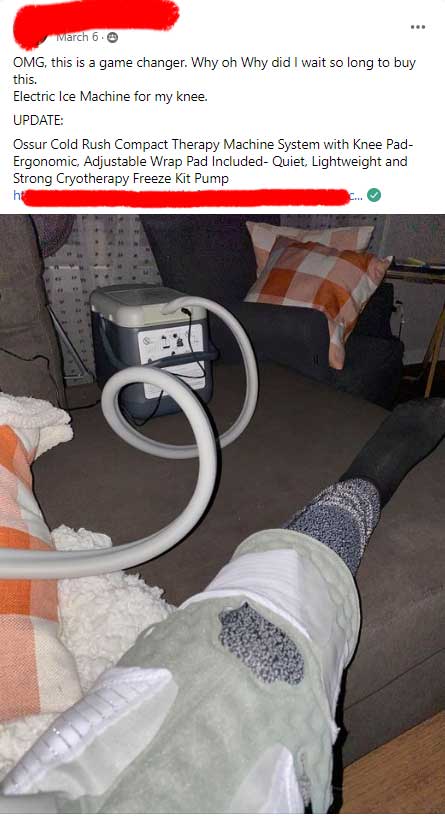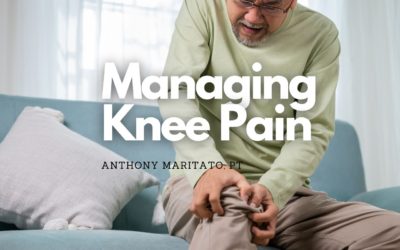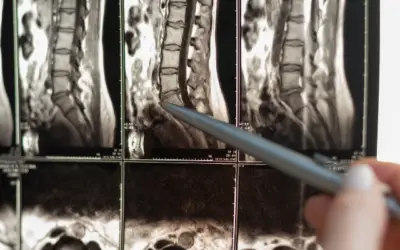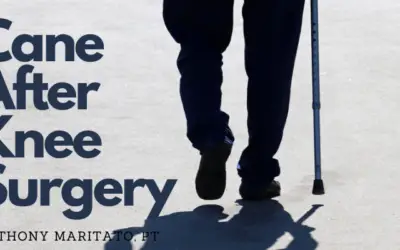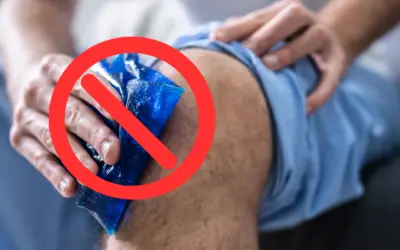How Painful Is A Total Knee Replacement
Patients have told me that a total knee replacement is more painful than a total hip replacement but less painful than a total shoulder replacement.
The pain is most intense during the first 48-72 hours after surgery. The pain improves steadily over the next 2-6 weeks.
Your surgeon and medical team should be notified if your pain is more intense than a 7 out of 10 on a pain scale with 10 being the highest intensity.
How Painful Is A Total Knee Replacement?
What you can expect:
Pain will fluctuate based on time, medication, activity, and more.
On a 0 to 10 pain scale with 0 being no pain and 10 being the most intense pain possible the first 48 to 72 hours after surgery is often described as a 7/10.
7/10 Pain is “Can’t be ignored for any length of time, but you can still go to work and participate in social activities.”
The pain will often vary between 3/10 – “Annoying enough to be distracting” at the low end up to an 8/10 “Physical activity severely limited. You can read and converse with effort. Nausea and dizziness set in as factors of pain.”
How much pain is normal and when should I be concerned?
If your pain is not improving on a daily basis during the first 2 weeks then you should consult with your surgical team for further assessment.
If your pain is so intense you are experiencing increased blood pressure, difficulty breathing or shortness of breath, and nausea you must contact your surgical team.
Here is a short video describing “normal pain after a total knee replacement.”
3 Strategies to Reduce Post Surgical Pain
1. Cryotherapy –
Cryotherapy is icing the knee or cooling the knee to reduce pain. Cryotherapy is the most popular non-pharmaceutical pain relief method recommended by nearly all surgeons after total knee replacement surgery.
This can be done with Chattanooga ColPac Gel Packs, ziplock freezer bags filled with crushed ice, or an Ossur Cold Rush Compact Therapy Machine.
While the clinical evidence may not fully support all of the claimed benefits of cryotherapy, there are many subjective reports from actual patients suggesting significant pain relief when using cryotherapy. [1]
2. Compression –
This can feel soothing and relaxing to a swollen and painful knee. Compression may be performed using a 6-inch wide elastic wrap or a velcro enclosure.
Compression helps maintain the warmth around the knee as well as reduce swelling and provide a counter-pressure to the outward forces generated by internal swelling.
These compressive wraps should be comfortable and may be used for as little as 10-minutes or as long as several hours.
A simply spiral wrap starting approximately 6 inches below the knee and progressing to 6 inches above the knee is common. I recommend a minimum of 6 inches wide elastic wrap with a 50% overlap to improve comfort.
3. Distraction –
Staying busy and keeping yourself occupied is one of the best pain management strategies available.
Hobbies, passion projects, and helping others are great ways to take your mind of the commonly experienced pain sensations associated with post-surgical recovery.
I have found that when patients have something else to do that isn’t too taxing and must be done by you and only you the body responds in positive ways.
Another part of managing the pain is understanding what is causing the pain.
There are several contributing factors to the pain and sessions you will be feeling after surgery.
Pain associated with the incision –
As your incision heals there will be different sensations coming from the skin and incision site. There will be itching, redness, and soreness. As the body heals the skin, there is an immune response that causes chemical changes in the skin and as a result inflammation and pain.
Being able to differentiate between normal healing of the skin and possible complications or infection might help reduce the actual pain associated with this process.
Signs of infection include:
-
- Foul odor
- Excessive seepage
- Increasing redness and warmth
- Increasing pain
- Increased body temperature
If you experience one of more of these symptoms then contact your surgical team.
Pain associated with bone healing –
During the procedure, the ends of your femur and tibia are mechanically removed and the implants are hammered and cemented into place. Often bone spurs are shaved off and your bone is placed under significant amounts of stress.
This bone trauma takes time to heal and is unseen to the naked eye. It is normal to have deep bone-associated pain for several weeks after surgery.
Pain above or below the surgery site.
Some surgeons use a tourniquet to reduce blood loss during surgery. This results in major soft tissue damage to the thigh musculature.
Alternatively, many patients experience significant pain in the calf and shin below the knee. This may be attributed to the new leg alignment or new walking patterns.
Both the upper leg pain and lower leg pain are frustrating and sometimes said to be worse than the knee pain.

References:
1. Markert SE. The use of cryotherapy after a total knee replacement: a literature review. Orthop Nurs. 2011 Jan-Feb;30(1):29-36. doi: 10.1097/NOR.0b013e318205749a. PMID: 21278552.
About the Author -
Anthony Maritato, PT has been a licensed physical therapist since 2006. He specializes in post surgical care and rehabilitation of total knee replacement and rotator cuff repair surgery.
Mr. Maritato is also nationally recognized as a therapist educator teaching courses related to Medicare reimbursement, contracting, and documentation.
Total Therapy Solutions LLC is Tony's primary practice which he owns with his wife Kathy who is also a licensed physical therapist.
More Blog Posts …
Managing Pain After Total Knee Replacement
Introduction to Managing Pain After a Knee Replacement Undergoing a total knee replacement is a significant medical procedure that can dramatically improve your quality of life. However, the journey to full recovery involves navigating through various challenges, one...
Total Knee Replacement Pain at Night
What to Expect Explore our comprehensive guide on managing 'Total Knee Replacement Pain at Night.' Learn about the causes of night pain, effective pain management strategies, best sleeping positions, and more. This article provides practical advice to help individuals...
Overview of Spinal Stenosis
Table of Contents What is spinal stenosis What are the symptoms of spinal stenosis How is spinal stenosis diagnosed What are the different types of treatment for spinal stenosis Where to find more information 1. What is spinal stenosis Spinal stenosis is a condition...
Spinal Stenosis Exercises to Avoid: During Knee Replacement Recovery
Spinal stenosis is relatively common among adults having a total knee replacement surgery. While spinal stenosis doesn't always impact total knee replacement recovery, when it does, it can be frustrating. Before I specialized in treating patients after a total knee...
Ride a Peloton After Knee Replacement Surgery
Table of Contents When can I return to riding my Peloton bike at home after a total knee replacement? Is a Peloton bike good physical therapy after a total knee replacement surgery? Will riding my Peloton too much wear out my new knee? How often should I ride my...
How to Use a Cane After Knee Surgery
Table of Contents Understanding the Purpose of Using a Cane after Knee Surgery How to Properly Use a Cane after Knee Surgery Common Mistakes to Avoid When Using a Cane Transitioning from a Walker to a Cane: When and How? Understanding the Purpose of Using a Cane after...
Ice Machine for Knee Surgery
Table of Contents Benefits of Using an Ice Machine After Knee Surgery How an Ice Machine Works Top Ice Machines for Knee Surgery Recovery How to Use an Ice Machine After Knee Surgery Where to Buy an Ice Machine and What to Consider Benefits of Using an Ice Machine...
Walking Your Dog After Knee Replacement Surgery: A Timeline for Recovery
Table of Contents Introduction Walking Your Dog After Knee Replacement Safety Considerations and Precautions Conclusion Introduction Hello, fellow dog lovers and knee replacement warriors! I'm Anthony Maritato, a licensed physical therapist specializing in post-total...
Top 5 Mistakes After Knee Replacement
In this article I will share my experience as a physical therapist and personal trainer of more than 22 years treating patients after total knee replacement surgery. I have seen patients who made every mistake possible and still had a great outcome following this...
Disadvantages of Knee Replacement Surgery
Table of Contents Introduction Pain Time Lost Cost Stress Post Surgical Risk or Complications Conclusion Introduction When considering treatment options for severe knee arthritis, one commonly considered intervention is knee replacement surgery. Despite its high...
